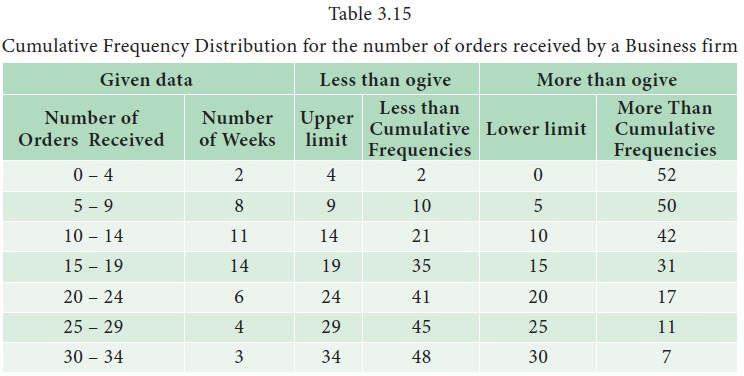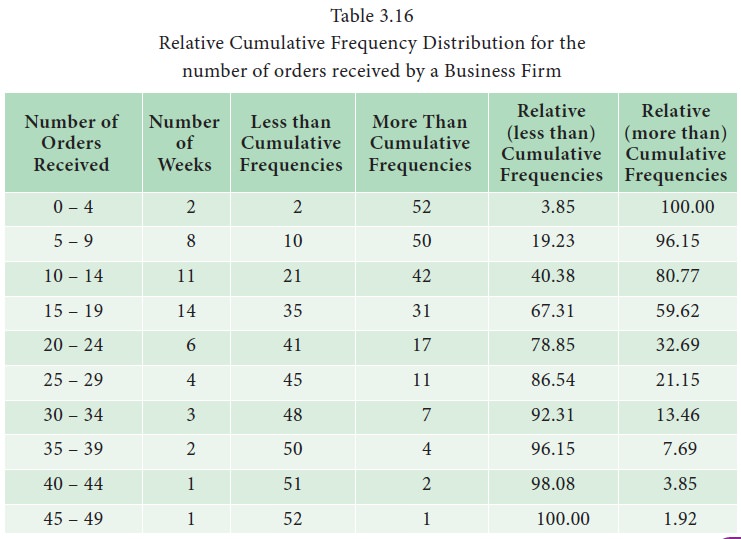Chapter: 11th Statistics : Chapter 3 : Classification and Tabulation of Data
Cumulative Frequency Distribution
Cumulative
Frequency Distribution
Cumulative
frequency corresponding to a class interval is defined as the total frequency
of all values less than upper boundary of the class. A tabular arrangement of
all cumulative frequencies together with the corresponding classes is called a
cumulative frequency distribution or cumulative frequency table.
The
main difference between a frequency distribution and a cumulative frequency
distribution is that in the former case a particular class interval according
to how many items lie within it is described, whereas in the latter case the
number of items that have values either above or below a particular level is
described.
There
are two forms of cumulative frequency distributions, which are defined as
follows:
(i) Less than
Cumulative Frequency Distribution: In this type of cumulative frequency distribution, the
cumulative frequency for each class shows the number of elements in the data
whose magnitudes are less than the upper limit of the respective class.
(ii) More than
Cumulative Frequency Distribution: In this type of cumulative frequency distribution, the
cumulative frequency for each class shows the number of elements in the data
whose magnitudes are larger than the lower limit of the class.
Example 3.15
Construct
less than and more than cumulative frequency distribution tables for the
following frequency distribution of orders received by a business firm over a
number of weeks during a year.

Solution:
For
the data related to the number of orders received per week by a business firm
during a period of one year, the less than and more than cumulative frequencies
are computed and are given in Table 3.15


Relative-Cumulative Frequency Distributions
The
relative cumulative frequency is defined as the ratio of the cumulative
frequency to the total frequency. The relative cumulative frequency is usually
expressed in terms of a percentage. The arrangement of relative cumulative
frequencies against the respective class boundaries is termed as relative
cumulative frequency distribution or percentage cumulative frequency
distribution.
Example 3.16
For
the data given in Example 3.15 find the relative cumulative frequencies.
Solution:
For
the data given in Example 3.15 the less-than and more-than cumulative
frequencies are obtained and given in Table 3.15 The relative cumulative
frequency is computed for each class by dividing the respective class
cumulative frequency by the total frequency and is expressed as a percentage.
The cumulative frequencies and related cumulative frequencies are tabulated in
Table 3.16

Related Topics